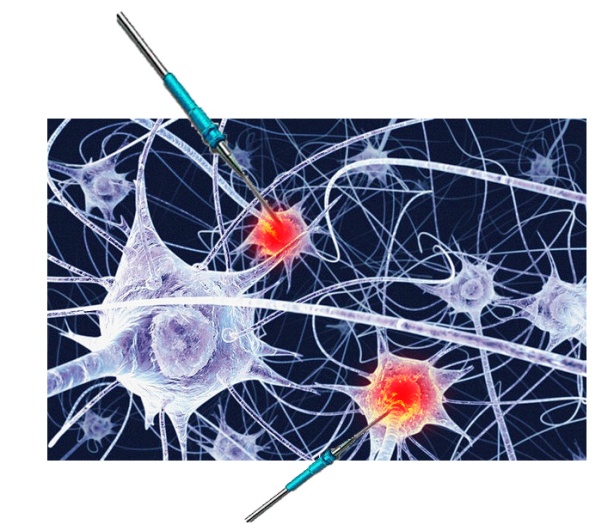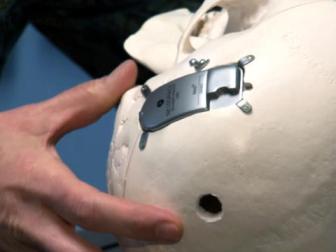Before he appeared in Matrix, Keanu Reeves already had a name in scifi flicks. Most of you probably recall cyber-punk movie Johnny Mnemonic: “320 Gb of stolen data wetwired directly into his brain”. We are not there yet, but there have been some advances into wetwiring things into the brain that deserve a post.
Facts are that the University of Southern California has reported the possibility of an implant available to patients in five to 10 years that might help people with localized brain damage, like patients after a stroke. The idea follows a black box model, like cochlear implants do: scientists study the brain to check how memories are stored. This process involves the activation of sets of neurons specifically in the hippocampus, where short-term memories become long-term ones. A sequence of activations triggers another set of neurons in a healthy area. It is not necessary to understand why, just to associate the input and output areas. Damaged areas, however, can not generate the input sequence. Hence, a set of electrodes and a control chip (to activate them in a particular order) are inserted into the damaged area to replicate what it can not do anymore. If everything works right, the brain does not mind whether the input neurons activated themselves or where triggered by electrodes: it will respond equally to both stimuli as long as both input sequences are the same. Think, for example, of Internet access in your smartphone: if you’are at home, the phone is most likely connected to your WiFi, whereas on the street it will be connected via 3G or GPRS. One most likely ignores how WiFi or 3G work on the inside -and does not really care-, as long as they replace each other appropriately to grant that we receive IMs in our cell phone. Similarly, it won’t matter if it was our brain cells or a chip who did the trick as long as we can recall where we left the bloody keys.
The idea of implanting a device in our brains to deliver current to our neurons may look a bit queasy, but in fact there are already similar devices working today to treat epilepsy (see image below) and Parkinson. The problem is actually that the current version of the hardware required to do the trick is by no means tiny at the moment, so we are at least 10 years away from the plug and play version of this technology.
One could still be skeptical about the capacity to map sequences of activation/deactivation in something so small and numerous as neurons. However, researchers at MIT and Georgia Tech have reported an automatic process to find and record such information in the living brain. They propose to use a robotic arm guided by a cell-detecting computer algorithm to do the task with micrometer accuracy. The arm moves a pipette in two-micrometer steps to detect cells, preventing it to poke through the membrane. Then, a electrode can break through the membrane in a safe way to record its internal electrical activity. They are now are now working on scaling up the number of electrodes to record multiple neurons at a time and see how they work together. Their ultimate goal is to classify the thousands of different types of cells in the brain, map how they connect to each other, and figure out how damaged cells differ from normal ones.
Combining these two scientific outcomes, one can see how they plan to bypass the hippocampus. We are probably not wetwiring gigabits to our brains, but we are probably one step closer to dreaming with electric sheep.
See more about Ted Berger’s research on his website.
See more about the robotic arm on MIT News.


